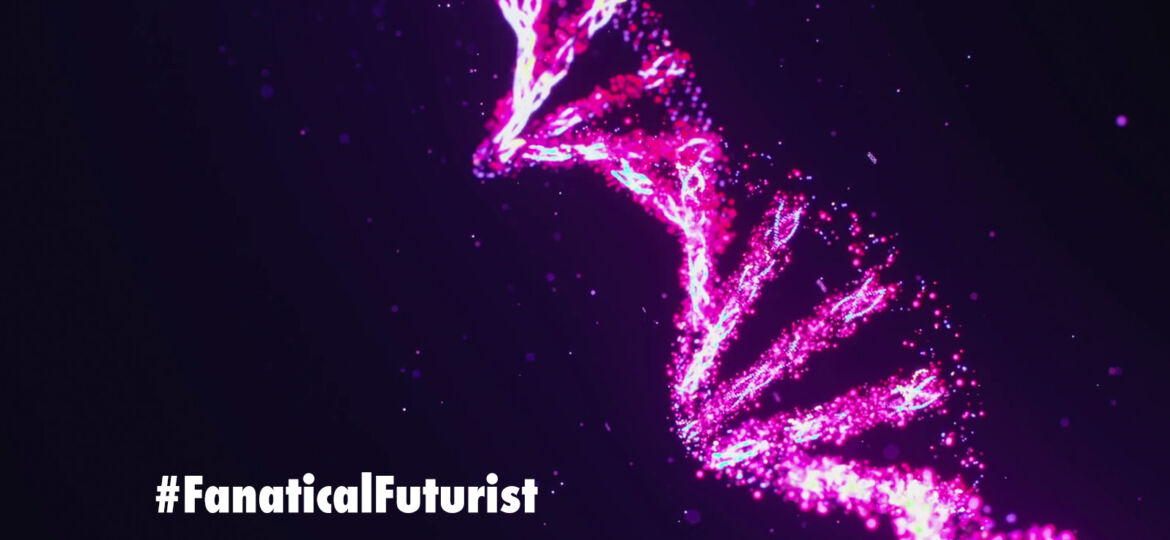
WHY THIS MATTERS IN BRIEF
DNA computers will be the next, next computing revolution after Quantum computers, and their power could be truly staggering.
By making DNA endlessly change researchers from the University of Manchester in the UK, who last year created the first ever blueprint for a DNA computer, have shown for the first time how a DNA computer might one day be capable of solving problems much faster than today’s systems, and even tomorrow’s insanely powerful Quantum computers, which in controlled conditions have already shown themselves to be capable of performing calculations 100 million times faster than their current day conventional counterparts.
The new DNA computer concept that the team created in a test tube was designed to demonstrate how it may be possible to make a theoretical type of computer known as a Non-Deterministic Universal Turing Machine, a machine that can solve tricky problems much faster, arguably billions to hundreds of billions times faster, than existing computers.
Imagine, for example, that a computer is trying to find the centre of a maze and has a choice between left and right. A conventional computer would turn in one direction and follow that path to the end, then try a different route if that one leads nowhere. But a Non-Deterministic Universal Turing Machine would explore both paths simultaneously, and do so again every time the path splits until it has found the right route to the maze’s heart, and because these theoretical machines explore all possible routes to a solution simultaneously, they aren’t constrained by time in the same way that conventional computers are.
With conventional machines, the trickier a problem is to solve, the more steps it requires, and the longer it takes to come up with an answer, but for Non-Deterministic Universal Turing Machines trickier problems would take the same time to solve as easier ones. Their computational power is instead limited more by the amount of space they occupy. Conventional processors, for example, pack billions of tiny transistors on a chip, but that’s nothing compared with the possible processing power of DNA.
“By using DNA it’s plausible to have on your desktop more processors working than exist in the rest of the planet put together”, says Ross King who led the team that created the concept, and who also created the first DNA computer blueprint last year.
King and his colleagues based their new concept on the premise that a single strand of DNA can be endlessly rearranged using standard gene editing techniques like, for example, CRISP-R, a revolutionary new gene editing system, dubbed the “Genesis Engine,” developed a few years ago. By mixing DNA in a test tube that contained seven different gene editing molecules the team were able to effectively ensure that the genetic code in the DNA could be reordered into a limitless number of new random combinations. Putting this in context you could see the simultaneous creation of a vast number of different DNA code combinations as the molecular equivalent of the computer exploring all routes in the maze at the same time.
At the moment there’s a big problem with the teams concept though, you can’t program it, and this means their current concept isn’t capable of tackling any problems, and as a result King acknowledges that it’s a long way away from becoming a working Non-Deterministic Universal Turing Machine. However, he says that his experiment shows it might be possible to use DNA to build such a computer and that, at least, is where all great ideas start.
Meanwhile though Nick Goldman at the European Bioinformatics Institute in the UK is less convinced.
“DNA is really hard to control,” he says, “and might not be an ideal substance to use for the future of computing,” and elsewhere Marta Kwiatkowska at the University of Oxford says the jump between a DNA computer that can theoretically solve problems and one that can do it in practice is huge.
A more realistic application of DNA computing, she says, might be DNA based logic gates like the ones that were created recently that use short strands of DNA to act as tiny biological computers within cells that trigger the release of certain molecules when they detect the presence of certain biomarkers within the cell. When this functionality is combined with future innovations in the space these logic gates could ultimately lead to the creation, for example, of computers that could be injected into our bodies, or any living organism, and form the foundation of a Biological Computer like the one that was recently created within a living Bacteria, complete with storage.
For now though tomorrow’s insanely powerful DNA computers are still a way off, so for now you’ll just have to make do storing your information in DNA in Microsoft’s Azure cloud, something, they say, will happen in 2020… but one day you’ll look back at today’s computing platforms and laugh at how puny they are, and that’s before we discuss tomorrow’s self-learning Neuromorphic computers that will pack the power of today’s biggest supercomputers into the size of a fingernail.
Puny modern day computers… ha!
















